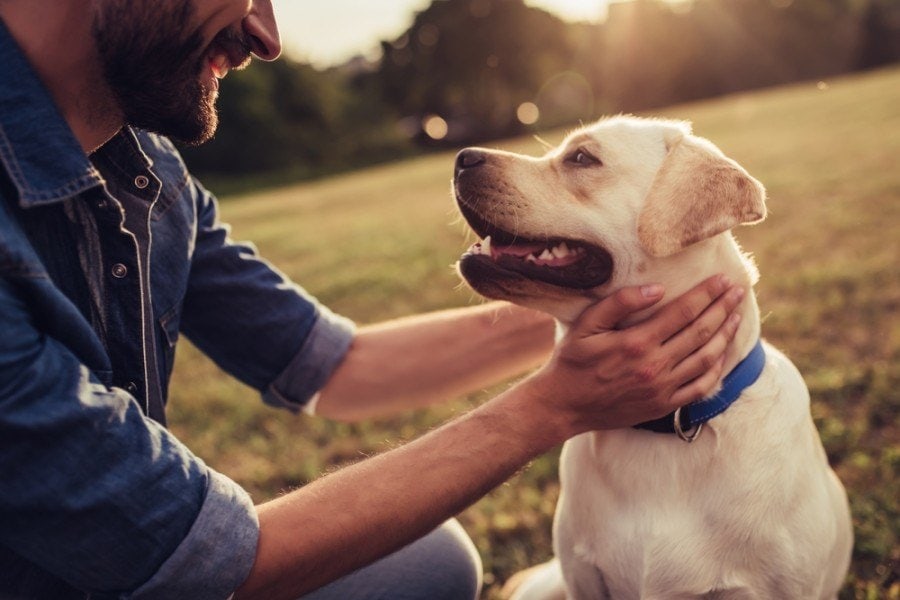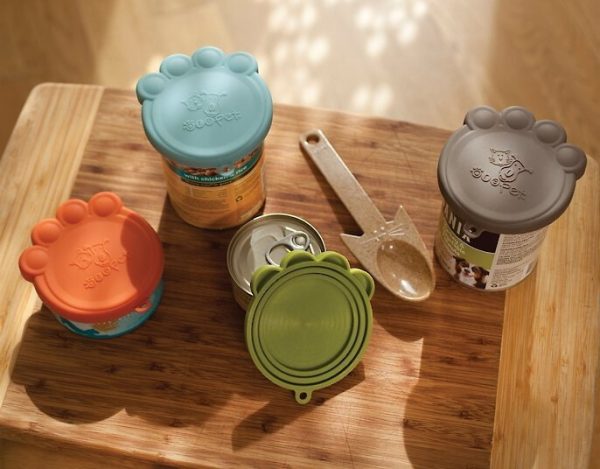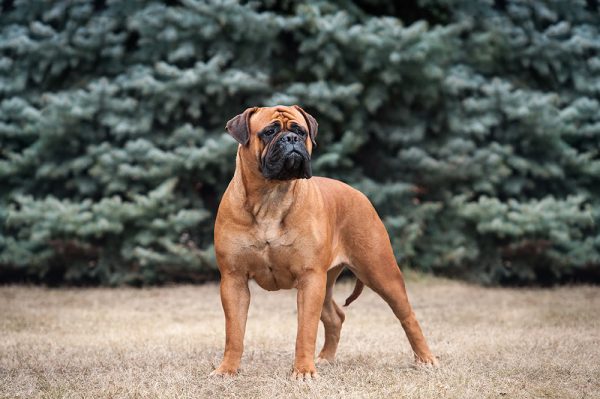Owning a dog is a big responsibility. Our fuzzy friends are entirely dependent on us to take care of them, and that means providing enough food, water, and exercise to meet their needs and keeping them safe wherever they go. Even experienced dog owners can get overwhelmed trying to think of everything they need to do to keep their pup safe in all situations, and that’s where we come in.
We’ve collected this list of dog safety tips to help ease your mind and fill in any gaps you might not have considered. We’ve included tips for keeping your dog safe at home, in the car, and at the dog park, as well as some miscellaneous tips for general safety.
1. Food Safety

If your dog eats any of these foods, contact a vet immediately:
- Avocado
- Alcohol
- Onions
- Garlic
- Coffee or tea
- Grapes
- Raisins
- Macadamia nuts
- Chocolate
- Fat trimmings or bones
- Raw fish
- Salt and salty foods
Did you know you can speak to a veterinarian without having to travel? Just head over to PangoVet. It's our online service where you can talk to a vet online and get the advice you need for your pet — all at an affordable price!

There are other food items that your dog shouldn’t eat but don’t constitute an emergency. Milk and dairy products can give your dog digestive problems, as many dogs are lactose intolerant, and you shouldn’t give them any sugary snacks on a regular basis. The best option is to avoid giving your dog any human food, but if you have to give your dog people snacks, here are some healthy options that can be offered in moderation:
- Cooked, lean meat without bones
- Fresh fruits (in moderation), like bananas, apples, watermelon
- Vegetables, like carrots, green beans, cucumber, zucchini, baked potatoes
- Cooked white rice
2. Car Safety

Most dogs love a ride in the car, but making sure they’re safe is essential if you’re going to let your fuzzy buddy ride shotgun. Just like humans, dogs need to be secured when they’re riding in a car. There are several options for securing your dog in the car, and which you choose depends on your dog and vehicle.
A harness is a great option to keep your dog safe on car rides, and they’re inexpensive and easy to use. Car harnesses attach to the seatbelts in your car and fit your dog just like a regular harness. Harnesses are great for short car rides since they’re easy to put on and can act as a regular harness. We use a harness on our dogs when we’re taking a quick trip over to the dog park.
Some dogs may be more comfortable in a travel crate for longer car rides, especially crate-trained dogs. Travel crates allow your dog to lay down and relax, where harnesses can sometimes make it difficult to move around (that’s the idea, after all). Another advantage of getting a travel crate is it gives your dog a home away from home when you get to your destination. The main drawback of a travel crate is the size; they take up a lot of space.
Under no circumstances should your dog ride in a car without being secured. Some people allow their dogs to ride in their car without a harness or crate, and others even let their dogs ride in truck beds. If you let your dog ride in a vehicle untethered, you’re asking for trouble and heartbreak.
3. Safety at the Dog Park

Dog parks are excellent places for your dog to stretch their legs and get some exercise and social interaction with other pooches. Whenever a bunch of dogs get together, it’s bound to get out of hand occasionally, and being prepared to step in and deescalate a potentially dangerous situation could help save you and your pup from an unpleasant situation.
The most important tip is always to keep a harness or collar on your dog, even if the dog park is enclosed. First, dogs are escape artists, and if your dog finds a way out of the enclosure, it can be more challenging to catch them or reunite them with you without their collar on. Second, if your dog gets into a scuffle with another dog, a collar or harness will help you gain control of them and remove them from the situation.
However, you should never grab your dog’s collar if they’re in a fight with another dog. In the middle of an intense altercation, your dog may not realize that hand belongs to you, and you could wind up with a bite and a nasty injury.
4. Safety at Home

Your home is your dog’s home, too, and it’s up to you to make sure it’s a safe, dog-friendly place. Even the most well-behaved dogs are prone to snooping occasionally, and it’s amazing how many things a curious dog can find.
Make sure to store any potentially hazardous material out of your dog’s reach, preferably behind closed doors. Medication, cleaning supplies, food leftovers and pest repellents are just some of the most common household products that can harm your pet. You might think that your daily pills are safe on the kitchen table, but it only takes a second for your dog to decide they want to try those tiny colorful treats you always have, and before you know it, you’re paying an expensive vet bill or worse.
Keep dangerous items behind closed doors and don’t make any exceptions, even for a second. For added protection, keep hazardous material above dog level in case you absentmindedly leave a door open.
Besides removing potentially poisonous things from your dog’s reach, another great way to keep them safe at home is to keep them well exercised and mentally stimulated on a daily basis. Ensure your dog has access to a comfy spot to nap, safe dog friendly things to chew under supervision, and durable toys they cannot easily destroy or ingest pieces of. Most dogs will get into trouble when they’re bored and looking for something to do. If your dog has dog-approved activities readily accessible, they’re less likely to get into trouble and engage in destructive behaviors.
Conclusion
Dog safety is relatively straightforward, but it’s easy to overlook one aspect or another. We hope you’ve found this guide helpful and have some ideas for how to keep your dog safe wherever it may be. Our dogs are full-fledged family members, and we want what’s best for them. If you follow the guidelines presented here, you’ll be well on your way to fostering a safe environment for your buddy wherever you go.
Related Reads:
Featured Image Credit: 4 PM production, Shutterstock





















